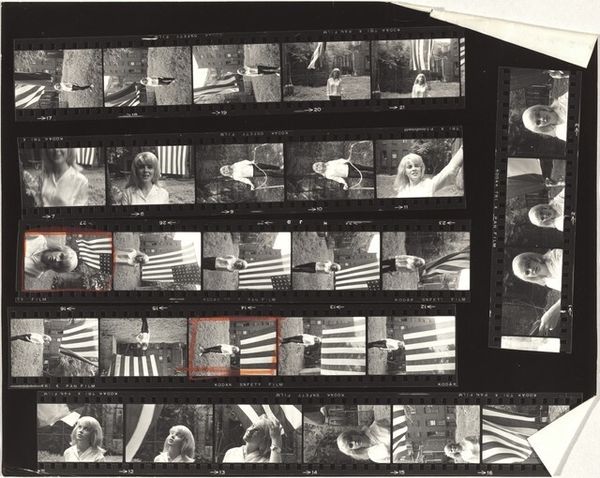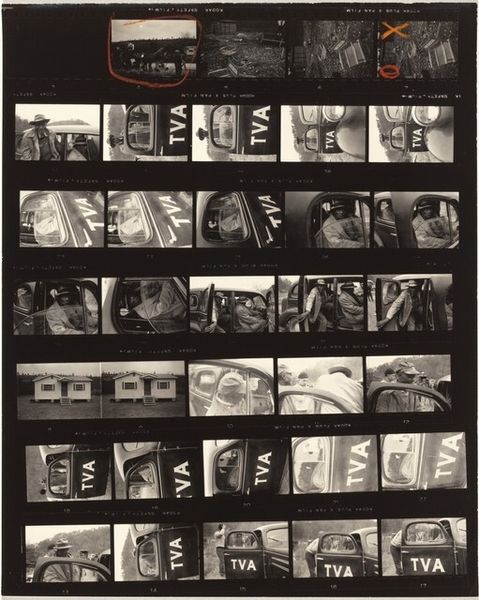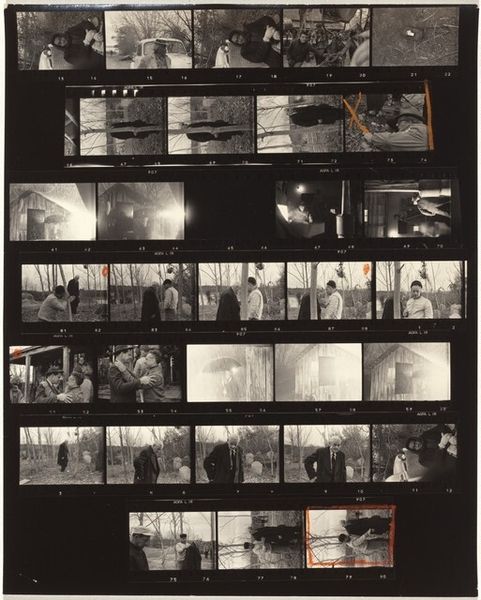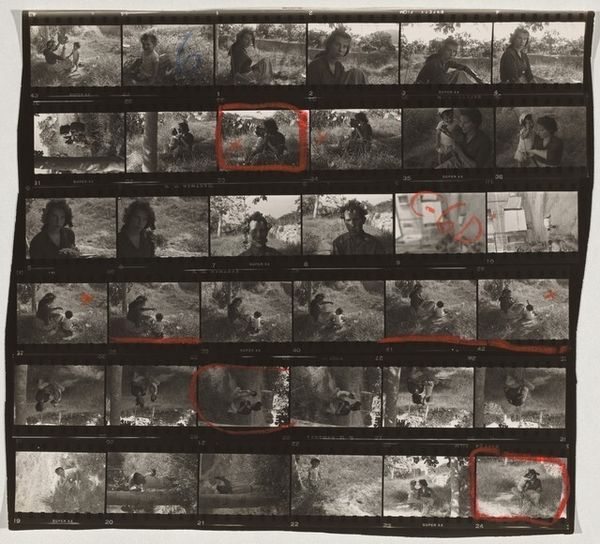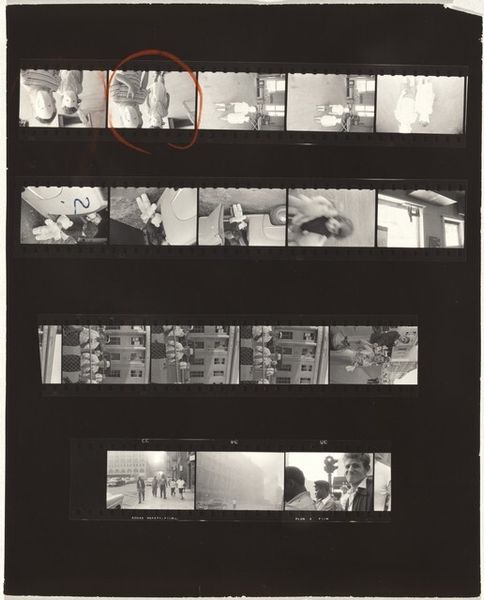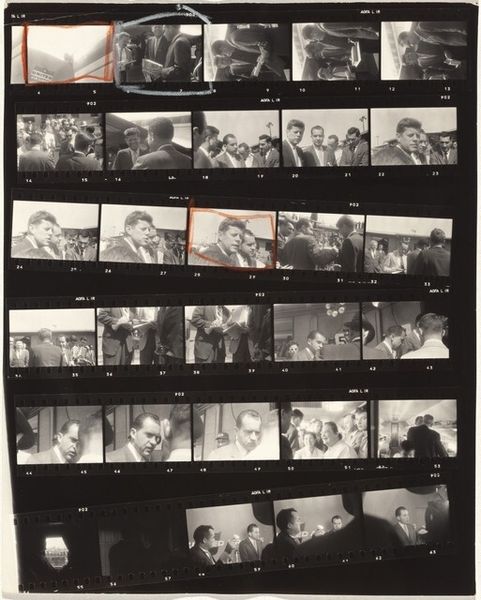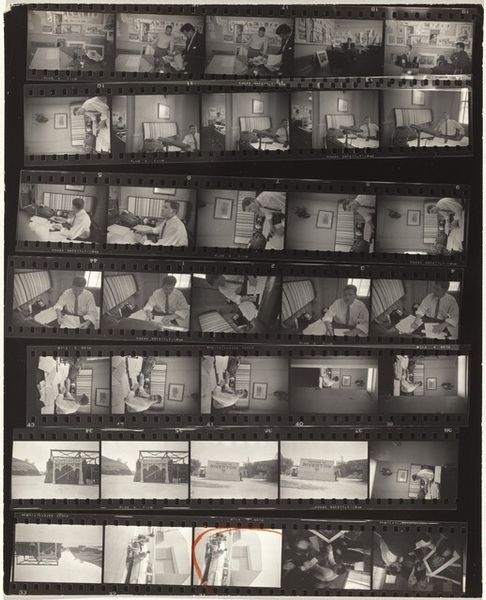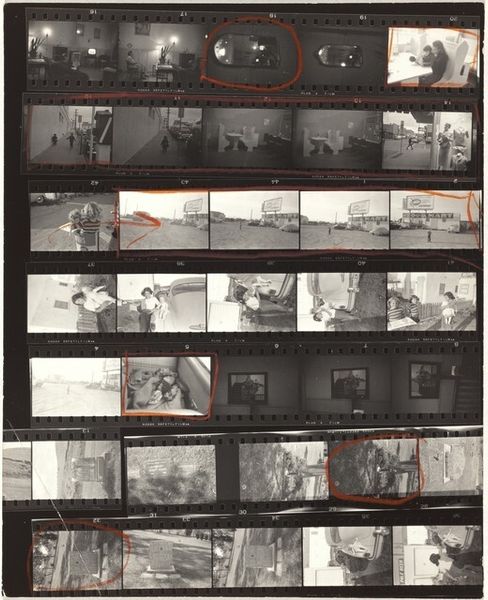
contact-print, photography
#
abstract-expressionism
#
landscape
#
contact-print
#
street-photography
#
photography
#
realism
Dimensions: overall: 21.8 x 27.9 cm (8 9/16 x 11 in.)
Copyright: National Gallery of Art: CC0 1.0
Curator: Looking at this contact sheet by Robert Frank from 1962 titled “Raoul Hague 9” what captures your attention first? Editor: The arrangement itself. It's almost like a film reel laid bare, showcasing Frank's photographic process, all the different crops give off an improvisational feel. But the selected images highlighted in orange—they beckon with an alluring, somewhat unsettling stillness. Curator: Indeed, these orange frames really highlight the importance of sculpture here. How do you interpret the inclusion of images showing what seem to be Hague and also nature? Editor: Well, if the art world shapes the understanding of the final artwork—highlighting specific views for emphasis, in your case with orange— then by placing it next to Hague, this composition hints to me about the symbiotic exchange between the man-made sculpture and our planet. A certain circularity comes to mind where each one informs and inspires the other. Almost hinting to the viewer what an artist considers for their final print. Curator: I'd lean more towards what it shows us about the essence of artistic exploration. Seeing sculpture from multiple perspectives, but also with nature imagery, and the human connection to working with it is vital for the viewers perception of the symbolist elements. This presentation suggests how each photographic snapshot tries to find what truly defines its essence—be that, in Frank's case, in sculpture and the creative process. Editor: I agree, in seeing several film frames in conjunction one can gather so much about Frank's message: I see a sort of resistance against the notion of the perfect shot. Instead, the selection underscores the power of an assemblage of visions. The end result in this case being that photography as a medium is very fluid and ever-evolving in the viewers perception. Curator: I am struck by this emphasis on experimentation by documenting through various takes from various perspectives. In it I recognize an effort to unlock new meaning for both artist, sitter, and viewer—to achieve a fuller understanding than a singular shot could ever hope to provide. Editor: Frank asks us to engage with image selection in its raw, transitional state, revealing photography as a process steeped in exploration and human touch rather than pristine precision. It shows us the political implications that choices bear. Curator: An open challenge for photographic art and artistic vision still echoes today. Editor: Definitely, making us see photography not merely as capture but an active, fluid mode of interpretation.
Comments
No comments
Be the first to comment and join the conversation on the ultimate creative platform.
